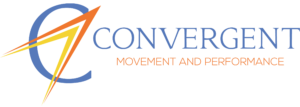How Do You Recover?
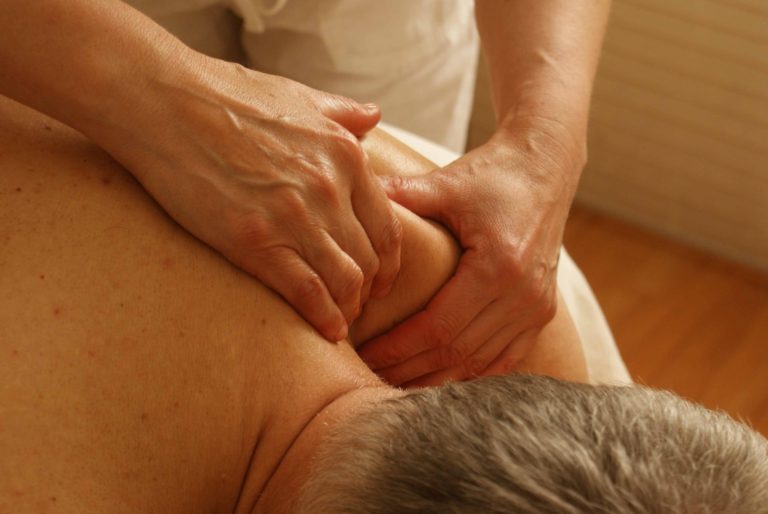
There are two primary questions that must be addressed in order to help determine whether you experience a Eustress or a Distress.
Those two questions are:
- What was the nature of the initial stressor that caused the alarm?
- Was there sufficient enough opportunity for recovery prior to a follow-up stressor?
Please recall that there are physical and psychological aspects to all stress, regardless of whether the initial stressor was physical or psychological in nature. Therefore, there must be physical and psychological considerations for each of the two questions listed above.
Within this article, we will delve deeper into question #2, and discuss how recovery impacts the stress response.
Normal recovery
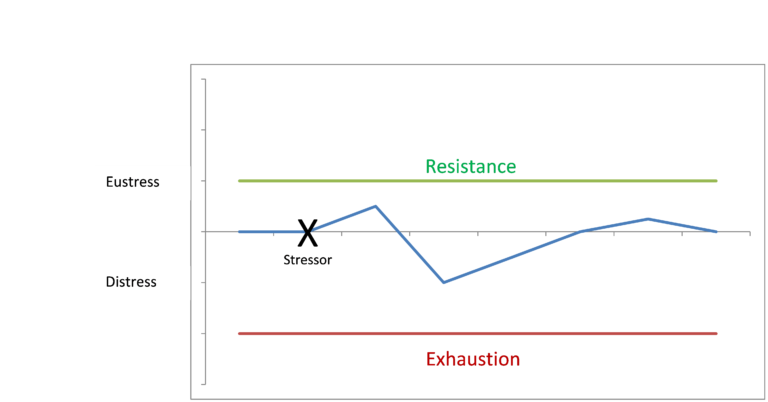
The graph to the left illustrates your body and mind’s normal recovery process after a physical or psychological stressor. The black center line represents your baseline performance ability, and the blue line represents your active level of performance at that given time.
We will be following this blue line as I explain how your performance is affected by stressors and recovery.
When a stressor causes your active performance to exceed baseline, than you are considered to be experiencing a Eustress. Always keep in mind that the ultimate goal is to improve performance, which you know you have successfully accomplished once you hit the green line indicating you have built a resistance to a previous challenge.
In contrast, if a stressor causes your active performance to drop below baseline, than you are considered to be experiencing a distress. Furthermore, if your distress becomes significant you may very well experience exhaustion leading to pain and injury.

We’ll begin by setting the stage. At this point, you are actively performing at your baseline ability until you are introduced to a physical or psychological obstacle that challenges or threatens your ability to accomplish your goal.

Once the stressor is introduced, the alarm is activated and your brain informs the sympathetic nervous system to manage the obstacle. Adrenalin is released for a “fight or flight” boost of energy, alertness, excitement, and overall performance. It is at this point that you will experience an increase in heart rate along with improved blood flow and nutrition to the areas of the body that the brain has determined need it the most in order to overcome the obstacle
If that obstacle is a physical stressor or requires physical action, then the necessary parts of your body will fight their hardest to overcome the obstacle.

Keep in mind that the fight-or-flight adrenalin-pounding support provided by the Sympathetic Nervous System is only effective for short periods of time. That is because your body is limited in the amount of energy it has access to in order to maintain such a powerful boost. Attempting to keep it up will surely take a significant toll on the body.
If the initial stressor required physical action, you may very well begin to notice stiffness, soreness, pain, and potentially swelling as the adrenalin wears off. If an injury resulting in tissue damage did occur, the inflammatory stage of healing will immediately go into effect and you will notice visible swelling.
During this period of adaptation, there will likely be a temporary reduction in performance, accompanied by increased difficulty coping with new or similar stressors.

Overall performance will begin to rise again as soon as the recovery process gets started.
Recovery is most effective when the autonomic nervous system shifts away from Sympathetic “Fight or Flight” into Parasympathetic “Rest and Digest.” The parasympathetic nervous system promotes sleep, physical and mental recovery, and proper digestion and nutrient absorption.
This shift in the nervous system will provide for an optimal environment where any physical structures that were hurt or damaged by the initial stressor are able to progress out of the inflammatory phase, through the proliferation phase, and finally into the remodeling phase of healing.
Please understand that the temporary reduction in performance is still present, and you may still experience an increased difficulty coping with new or similar stressors.
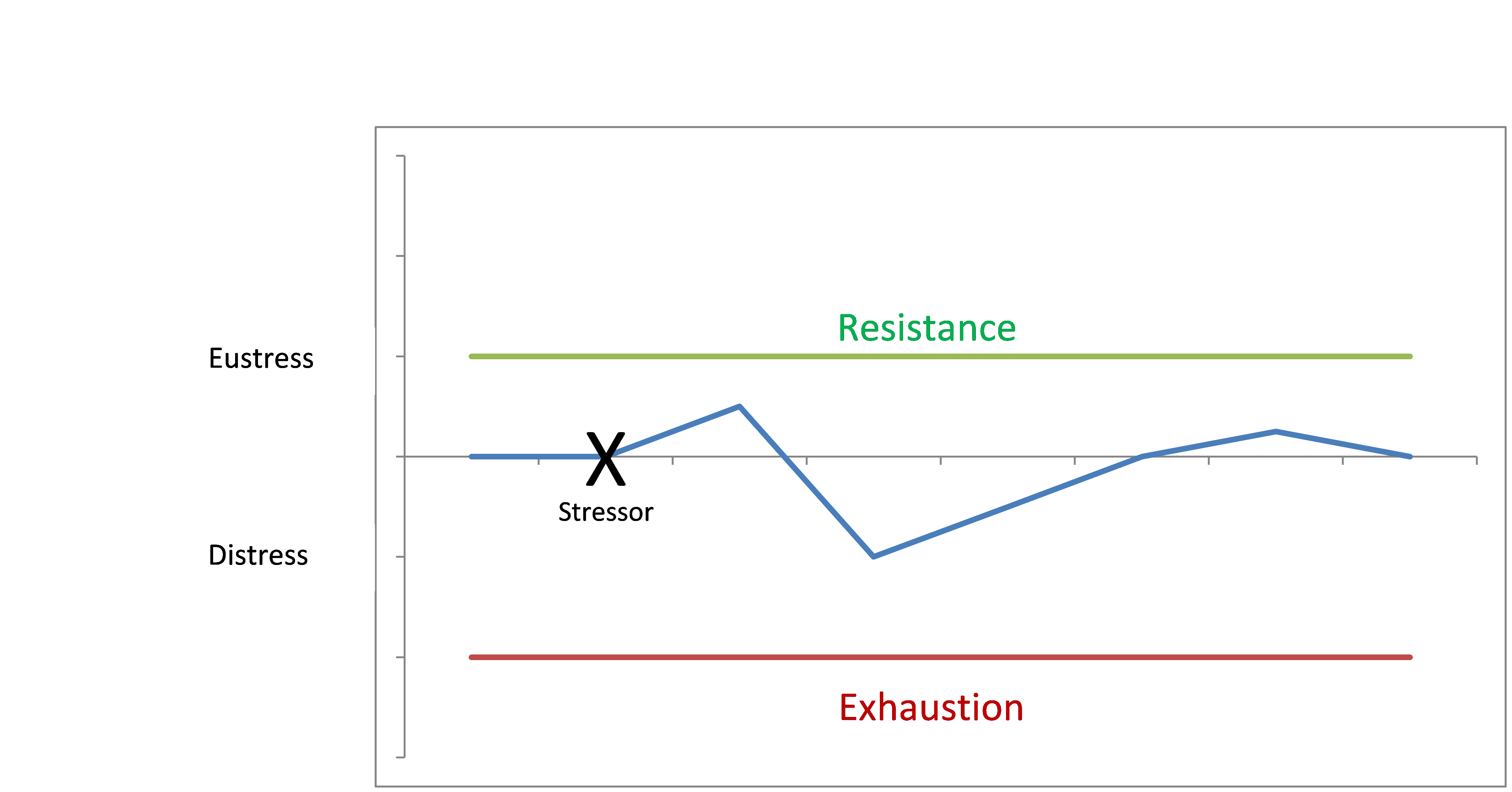
Finally, performance will gradually return to baseline as long as you complete all necessary steps for appropriate recovery. As you return to baseline abilities, you will again be able to handle previous levels of physical and psychological stress.
Building a resistance
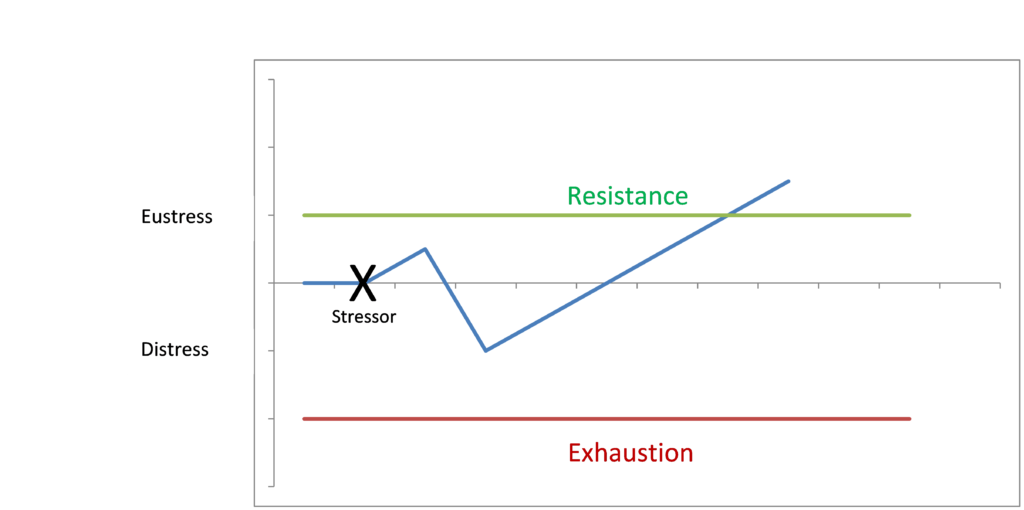
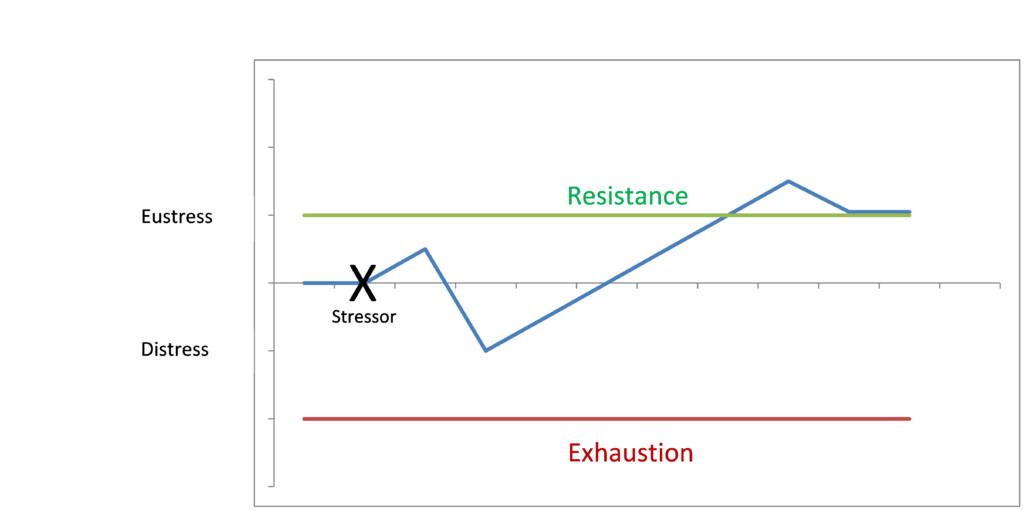
As you see here, your performance is able to surpass baseline levels and enter into the resistance level. This can only be accomplished as long as there was an optimally planned stressor and sufficient recovery was permitted.
That elevated performance now serves as your new baseline level of performance. It is during this process that you build a resistance to the initial stressor, whereby your overall sensitivity to stressors goes down and so that previous stressor would no longer present as an obstacle.
The previous example demonstrated the recovery and adaptation cycle of normal stresses. But if your mission is performance enhancement, than you must undoubtedly do better than normal!
With an optimally planed fitness and training program, we can successfully accomplish a “training effect” whereby the new and adapted levels of performance exceed previous levels of performance. By progressing through the Convergent Path to Performance, you will be introduced to these optimal training parameters which will allow you to successfully experience the performance enhancing benefits of the “training effect”
Exhaustion
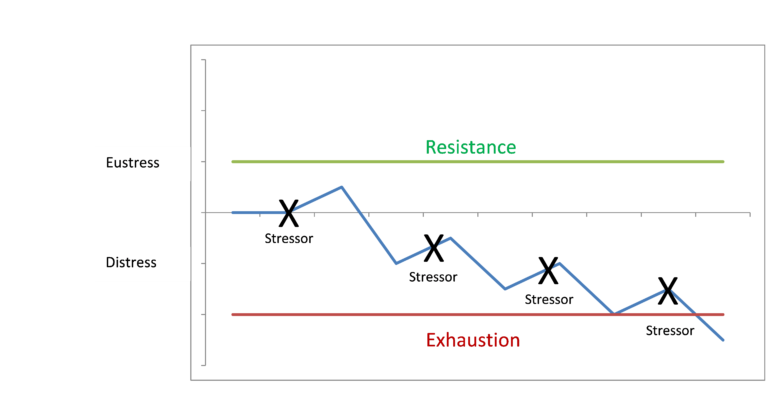
Just as optimal training may result in a resistance to previous stressors and overall improved performance, a poor training program or lifestyle may have the opposite effect and lead to significant distress and injury through exhaustion.
If a new stressor is introduced prior to adequate physical and psychological recovery, than the process must prematurely begin all over again. There will be a continued downward slope where you become more and more sensitive to stressors that previously may not have been considered an obstacle.
Through this process, you remain “sympathetic dominant” and do not effectively transition into the parasympathetic state that is ideal for recovery. Physical structures that may have been injured will not have the support or opportunity to heal, and you will notice that the adrenalin “fight or flight” energy boost becomes smaller and less effective with each stressor due to adrenal fatigue until full exhaustion is hit. Exhaustion often leads to plateaus in progress and signs and symptoms of generalized or specific soreness, persistent minor injuries, and finally significant injury and damage.
In the fitness and sport world, these signs and symptoms are most associated with a condition termed “overtraining.” In the injury, pain, and rehabilitation world, these signs and symptoms are most associated with “overuse injuries.” Overtraining and overuse injuries are among the clearest examples of exhaustion, and should be considered simply as:
- Overstressed (excessive alarm)
- Under-recovered (unable to complete resistance)
In these conditions, there is a clear loss of balance between stress and recovery. For maximal performance enhancement, your must have advanced strategies for managing stress as well as providing optimal recovery so that a successful resistance can be completed.
TAKE ACTION!
- Reference and review the updated list you completed in the “Learn How to Take Advantage of Stress” article.
- Take the time to go through your list of Eustress and Distress, and reflect on how recovery affected your outcome.
- Be sure you have read the following article on exactly how the nature of the initial stressor influences your stress response
- Once you successfully read through and understand the recommended content on the nature of the initial stressor and recovery, continue on to the final article in Step 2 of the Convergent Path to Performance. In the final Step 2 article, you will learn how to begin planning your personalized performance enhancement program by effectively taking advantage of the mind-body stress phenomenon in a way that maximizes Eustress while minimizing Distress.
Summary
The manner by which you recover from an initial stressor directly influences whether you will experience a Eustress or Distress. Always remember that your body has an innate and incredible ability to recover as long as you provide the appropriate opportunity to do so.
By understanding your body’s natural recovery process, you can engage in purposeful stressors at ideal times of the recovery process in order to enhance performance. This approach is known as training. On the other hand, undergoing excessive stress without sufficient recovery will lead to exhaustion and subsequent injury.
The key is determining that delicate balance.

Dr. Eugene Ketselman PT, DPT, Cert. MDT, CSCS
Dr. Eugene Ketselman is a licensed Physical Therapist, Certified Strength and Conditioning Specialist, Performance Coach, and owner of Convergent Movement and Performance; Home of where Physical Therapy, fitness, and performance training converge! Dr. Ketselman's mission is to help motivated athletes and active adults excel in their passions by maximizing physical performance and reducing setbacks from pain and injury.
Here at Convergent Movement and Performance, we practice what we preach. You know we are a good match for one another as soon as you find yourself relating to the content we provide. Be sure to click below to learn more.
Do you have specific questions that aren’t answered on this website?
Click below
Does pain, weakness, or exhaustion prevent you from reaching your FULL potential while performing the activities you love?
Click below
Do you love what you’re seeing, but still aren’t sure if you can make the commitment?
Click below
Contact Us
Convergent Movement and Performance serves out of Northern – Central New Jersey, conveniently located to those that live, work, and travel in the nearby towns of Warren, Bridgewater, Martinsville, Watchung Hills, Bedminster, Basking Ridge, Bernardsville, Chatham, Westfield, and Piscataway within Somerset, Morris, Union, and Middlesex counties, NJ.
